Troy-Bilt Mustang 42 XP Handleiding
Troy-Bilt
Grasmaaier
Mustang 42 XP
Bekijk gratis de handleiding van Troy-Bilt Mustang 42 XP (44 pagina’s), behorend tot de categorie Grasmaaier. Deze gids werd als nuttig beoordeeld door 38 mensen en kreeg gemiddeld 3.8 sterren uit 19.5 reviews. Heb je een vraag over Troy-Bilt Mustang 42 XP of wil je andere gebruikers van dit product iets vragen? Stel een vraag
Pagina 1/44

Important Safe Operation Practices • Assembly & Set-Up • Controls & Operation • Product Care
WARNING
READ AND FOLLOW ALL SAFETY RULES AND INSTRUCTIONS IN THIS MANUAL
BEFORE ATTEMPTING TO OPERATE THIS MACHINE.
FAILURE TO COMPLY WITH THESE INSTRUCTIONS MAY RESULT IN PERSONAL INJURY.
OperatOr’s Manual
Form No. 769-11540
(October 5, 2016)
Important Safe Operation Practices 2 .....................
Assembly & Set-Up 7 ..................................................
Controls & Operation .............................................11
Product Care ...........................................................15
Parts/Warranty See Separate Supplement ..............
Table of Contents
NOTE: This Operator’s Manual covers several models. Features may vary by model. Not all features in this manual are applicable to all
models and the model depicted may differ from yours.
Zero-Turn Tractor
Lapbar

Important Safe Operation Practices 2
2
General Operation
1. Read, understand, and follow all instructions
on the machine and in the manual(s) before
attempting to assemble and operate.
Keep this manual in a safe place for future
and regular reference and for ordering
replacement parts.
2. Be familiar with all controls and their proper
operation. Know how to stop the machine
and disengage them quickly.
3. Never allow children under 14 years of
age to operate this machine. Children 14
and over should read and understand the
instructions and safe operation practices in
this manual and on the machine and should
be trained and supervised by an adult.
4. Never allow adults to operate this machine
without proper instruction.
5. To help avoid blade contact or a thrown
object injury, keep bystanders, helpers,
children and pets at least 75 feet from
the machine while it is in operation. Stop
machine if anyone enters the area.
6. Thoroughly inspect the area where the
equipment is to be used. Remove all stones,
sticks, wire, bones, toys, and other foreign
objects which could be picked up and
thrown by the blade(s). Thrown objects can
cause serious personal injury.
7. Plan your mowing pattern to avoid
discharge of material toward roads,
sidewalks, bystanders and the like. Also,
avoid discharging material against a wall or
obstruction which may cause discharged
material to ricochet back toward the operator.
8. Always wear safety glasses or safety goggles
during operation and while performing an
adjustment or repair to protect your eyes.
Thrown objects which ricochet can cause
serious injury to the eyes.
9. Wear sturdy, rough-soled work shoes
and close-fitting slacks and shirts. Loose
fitting clothes and jewelry can be caught in
movable parts. Never operate this machine
in bare feet or sandals.
10. Be aware of the mower and attachment
discharge direction and do not point it at
anyone. Do not operate the mower without
the discharge cover or entire grass catcher
in its proper place.
11. Do not put hands or feet near rotating parts
or under the cutting deck. Contact with the
blade(s) can amputate hands and feet.
12. A missing or damaged discharge cover
can cause blade contact or thrown object
injuries.
13. Stop the blade(s) when crossing gravel
drives, walks, or roads and while not cutting
grass.
14. Watch for traffic when operating near or
crossing roadways. This machine is not
intended for use on any public roadway.
15. Do not operate the machine while under
the influence of alcohol or drugs.
16. Mow only in daylight or good artificial light.
17. Never carry passengers.
18. Do not use the machine for towing.
19. Back up slowly. Always look down and
behind before and while backing to avoid
a back-over accident. Be aware and pay
attention to the safety system function that
stops power to the blades when driving in
reverse. If not fuctioning properly, contact
an authorized dealer for safety system
inspection and repair.
20. Slow down before turning. Operate the
machine smoothly. Avoid erratic operation
and excessive speed.
21. Disengage blade(s), set parking brake, stop
engine and wait until the blade(s) come to a
complete stop before removing grass catcher,
emptying grass, unclogging chute, removing
any grass or debris, or making any adjustments.
22. Never leave a running machine unattended.
Always turn off blade(s), place drive control
levers in neutral, set parking brake, stop
engine and remove key before dismounting.
23. Use extra care when loading or unloading
the machine into a trailer or truck. This
machine should not be driven up or down
ramp(s), because the machine could tip
over, causing serious personal injury. The
machine must be pushed manually on
ramp(s) to load or unload properly.
24. Muffler and engine become hot and can
cause a burn. Do not touch.
25. Check overhead clearances carefully before
driving under low hanging tree branches,
wires, door openings etc., where the operator
may be struck or pulled from the machine,
which could result in serious injury.
26. Disengage all attachment clutches, set the
parking brake to the ‘ position and move ON’
the RH and LH drive control levers to the
neutral position before attempting to start
the engine.
27. Your machine is designed to cut normal
residential grass of a height no more than 10”.
Do not attempt to mow through unusually
tall, dry grass (e.g., pasture) or piles of dry
leaves. Dry grass or leaves may contact the
engine exhaust and/or build up on the mower
deck presenting a potential fire hazard.
28. Use only accessories and attachments
approved for this machine by the machine
manufacturer. Read, understand and follow
all instructions provided with the approved
accessory or attachment.
29. Data indicates that operators, age 60
years and above, are involved in a large
percentage of riding mower-related injuries.
These operators should evaluate their
ability to operate the riding mower safely
enough to protect themselves and others
from serious injury.
30. If situations occur which are not covered
in this manual, use care and good
judgment. Contact your customer service
representative for assistance.
Slope Operation
Slopes are a major factor related to loss of control
and tip-over accidents which can result in severe
injury or death. All slopes require extra caution. If
you cannot back up the slope or if you feel uneasy
on it, do not mow it.
For your safety, use the slope gauge included
as part of this manual to measure slopes before
operating this machine on a sloped or hilly area. If
the slope is greater than 15 degrees as shown on
the slope gauge, do not operate this machine on
that area or serious injury could result.
WARNING
This symbol points out important safety instructions which, if not followed, could endanger the personal safety and/or property of yourself and others. Read and follow all instructions in this
manual before attempting to operate this machine. Failure to comply with these instructions may result in personal injury. When you see this symbol. HEED ITS WARNING!
WARNING
California Proposition 65
Engine Exhaust, some of its constituents, and certain vehicle components contain or emit chemicals known to State of California to cause cancer and birth defects or other reproductive harm.
Battery posts, terminals, and related accessories contain lead and lead compounds, chemicals known to the State of California to cause cancer and reproductive harm. Wash hands after
handling.
DANGER
This machine was built to be operated according to the safe operation practices in this manual. As with any type of power equipment, carelessness or error on the part of the operator can
result in serious injury. This machine is capable of amputating hands and feet and throwing objects. Failure to observe the following safety instructions could result in serious injury or death.

3S 2 — i Section mportant afe peration racticeS o p
Do:
1. Mow across slopes, not up and down.
Exercise extreme caution when changing
direction on slopes.
2. Watch for holes, ruts, bumps, rocks, or
other hidden objects. Uneven terrain could
overturn the machine. Tall grass can hide
obstacles.
3. Use slow speed. Choose a low enough
speed so that you will not have to stop while
on the slope. Avoid starting or stopping on
a slope. If the tires are unable to maintain
traction, disengage the blades and proceed
slowly and carefully straight down the slope.
4. Follow the manufacturer’s
recommendations for wheel weights or
counterweights to improve stability.
5. Use extra care with grass catchers or other
attachments. These can change the stability
of the machine.
6. Keep all movement on the slopes slow and
gradual. Do not make sudden changes
in speed or direction. Rapid acceleration
or deceleration could cause the front of
the machine to lift and rapidly roll over
backwards, which could cause serious injury.
Do Not:
1. Do not turn on slopes unless necessary;
then turn slowly uphill and use extra care
while turning.
2. Do not mow near drop-offs, ditches or
embankments. The mower could suddenly
turn over if a wheel is over the edge of a cliff,
ditch, or if an edge caves in.
3. Do not try to stabilize the machine by
putting your foot on the ground.
4. Do not use a grass catcher on steep slopes.
5. Do not mow on wet grass. Reduced traction
could cause sliding.
Children
1. Tragic accidents can occur if the operator is
not alert to the presence of children. Children
are often attracted to the machine and the
mowing activity. They do not understand
the dangers. Never assume that children will
remain where you last saw them.
a. Keep children out of the mowing
area and in watchful care of a
responsible adult other than the
operator.
b. Be alert and turn machine off if a
child enters the area.
c. To avoid back-over accidents,
always look behind and down for
small children.
d. Never carry children, even with the
blade(s) shut off. They may fall off and
be seriously injured or interfere with
safe machine operation.
e. Use extreme care when approaching
blind corners, doorways, shrubs,
trees or other objects that may block
your vision of a child who may run
into the path of the machine.
f. Keep children away from hot or
running engines. They can suffer
burns from a hot muffler.
g. Remove key when machine is
unattended to prevent
unauthorized operation.
2. Never allow children under 14 years of
age to operate this machine. Children 14
and over should read and understand the
instructions and safe operation practices in
this manual and on the machine and should
be trained and supervised by an adult.
Service
Safe Handling of Gasoline:
1. To avoid personal injury or property damage
use extreme care in handling gasoline.
Gasoline is extremely flammable and
the vapors are explosive. Serious personal
injury can occur when gasoline is spilled
on yourself or your clothes which can
ignite. Wash your skin and change clothes
immediately.
a. Use only an approved gasoline
container.
b. Never fill containers inside a vehicle
or on a truck or trailer bed with a
plastic liner. Always place containers
on the ground away from your
vehicle before filling.
c. When practical, remove gas-
powered equipment from the truck
or trailer and refuel it on the ground.
If this is not possible, then refuel
such equipment on a trailer with a
portable container, rather than from
a gasoline dispenser nozzle.
d. Keep the nozzle in contact with the
rim of the fuel tank or container
opening at all times until fueling is
complete. Do not use a nozzle lock-
open device.
e. Extinguish all cigarettes, cigars,
pipes and other sources of ignition.
f. Never fuel machine indoors.
g. Never remove gas cap or add fuel
while the engine is hot or running.
Allow engine to cool at least two
minutes before refueling.
h. Never over fill fuel tank. Fill tank to
no more than ½” below bottom of
filler neck to allow space for fuel
expansion.
i. Replace gasoline cap and tighten
securely.
j. If gasoline is spilled, wipe it off
the engine and equipment. Move
machine to another area. Wait 5
minutes before starting the engine.
k. To reduce fire hazards, keep machine
free of grass, leaves, or other debris
build-up. Clean up oil or fuel spillage
and remove any fuel soaked debris.
l. Never store the machine or fuel
container inside where there is an
open flame, spark or pilot light as
on a water heater, space heater,
furnace, clothes dryer or other gas
appliances.
m. Allow a machine to cool at least five
minutes before storing.
General Service
1. Never run an engine indoors or in a poorly
ventilated area. Engine exhaust contains
carbon monoxide, an odorless, and deadly gas.
2. Before cleaning, repairing, or inspecting,
make certain the blade(s) and all moving
parts have stopped. Disconnect the spark
plug wire and ground against the engine to
prevent unintended starting.
3. Periodically check to make sure the
blades come to complete stop within
approximately (5) five seconds after
operating the blade disengagement control.
If the blades do not stop within the this time
frame, your machine should be serviced
professionally by an authorized dealer.
4. Regularly check the safety interlock system
for proper function, as described later in this
manual. If the safety interlock system does not
function properly, have your machine serviced
professionally by an authorized dealer.
5. Check the blade(s) and engine mounting
bolts at frequent intervals for proper
tightness. Also, visually inspect blade(s) for
damage (e.g., excessive wear, bent, cracked).
Replace the blade(s) with the original
equipment manufacturer’s (O.E.M.) blade(s)
only, listed in this manual. “Use of parts
which do not meet the original equipment
specifications may lead to improper
performance and compromise safety!”
6. Mower blades are sharp. Wrap the blade or
wear gloves, and use extra caution when
servicing them.
7. Keep all nuts, bolts, and screws tight to be sure
the equipment is in safe working condition.
8. Never tamper with the safety interlock
system or other safety devices. Check their
proper operation regularly.
9. After striking a foreign object, stop the
engine, disconnect the spark plug wire(s)
and ground against the engine. Thoroughly
inspect the machine for any damage. Repair
the damage before starting and operating.
10. Never attempt to make adjustments or repairs
to the machine while the engine is running.
11. Grass catcher components and the
discharge cover are subject to wear and
damage which could expose moving parts
or allow objects to be thrown. For safety
protection, frequently check components
and replace immediately with original
equipment manufacturer’s (O.E.M.) parts
only, listed in this manual. “Use of parts
which do not meet the original equipment
specifications may lead to improper
performance and compromise safety!”
12. Do not change the engine governor settings
or over-speed the engine. The governor
controls the maximum safe operating speed
of the engine.
13. Maintain or replace safety and instruction
labels, as necessary.
14. Observe proper disposal laws and regulations
for gas, oil, etc. to protect the environment.
15. According to the Consumer Products Safety
Commission (CPSC) and the U.S. Environmental
Protection Agency (EPA), this product has an
Average Useful Life of seven (7) years, or 270
hours of operation. At the end of the Average
Useful Life have the machine inspected
annually by an authorized service dealer to
ensure that all mechanical and safety systems
are working properly and not worn excessively.
Failure to do so can result in accidents, injuries
or death.
Product specificaties
| Merk: | Troy-Bilt |
| Categorie: | Grasmaaier |
| Model: | Mustang 42 XP |
Heb je hulp nodig?
Als je hulp nodig hebt met Troy-Bilt Mustang 42 XP stel dan hieronder een vraag en andere gebruikers zullen je antwoorden
Handleiding Grasmaaier Troy-Bilt
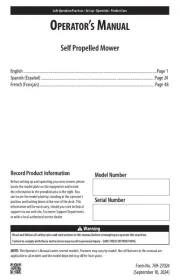
11 Februari 2025
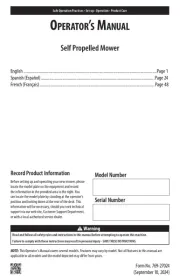
10 Februari 2025
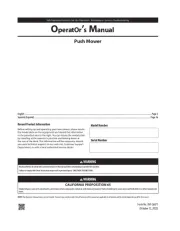
10 Februari 2025

31 Januari 2024

31 Januari 2024

31 Januari 2024

31 Januari 2024

31 Januari 2024

31 Januari 2024

31 Januari 2024
Handleiding Grasmaaier
- Eliet
- Cooper
- Ozito
- WOLF-Garten
- Gamma
- Robomow
- Tesco
- Ferrex
- Yato
- Viking
- Budget
- Plantiflor
- Challenge
- Electrolux
- Do It + Garden
Nieuwste handleidingen voor Grasmaaier
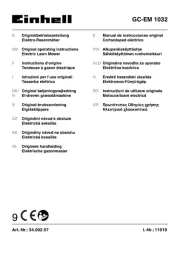
2 September 2025
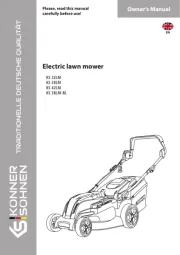
2 September 2025
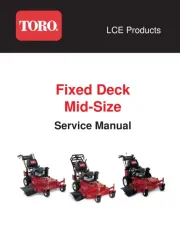
2 September 2025
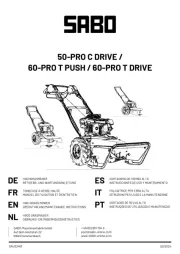
2 September 2025
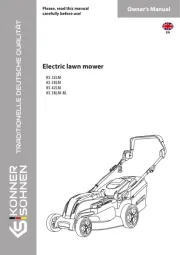
1 September 2025
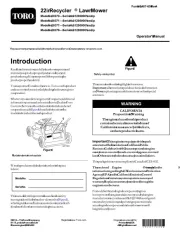
1 September 2025
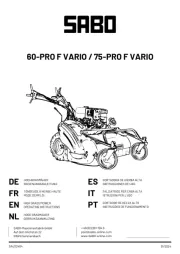
1 September 2025
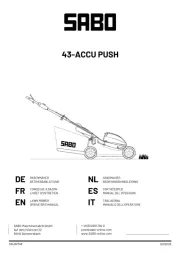
1 September 2025
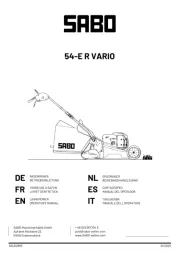
1 September 2025
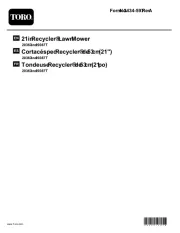
1 September 2025